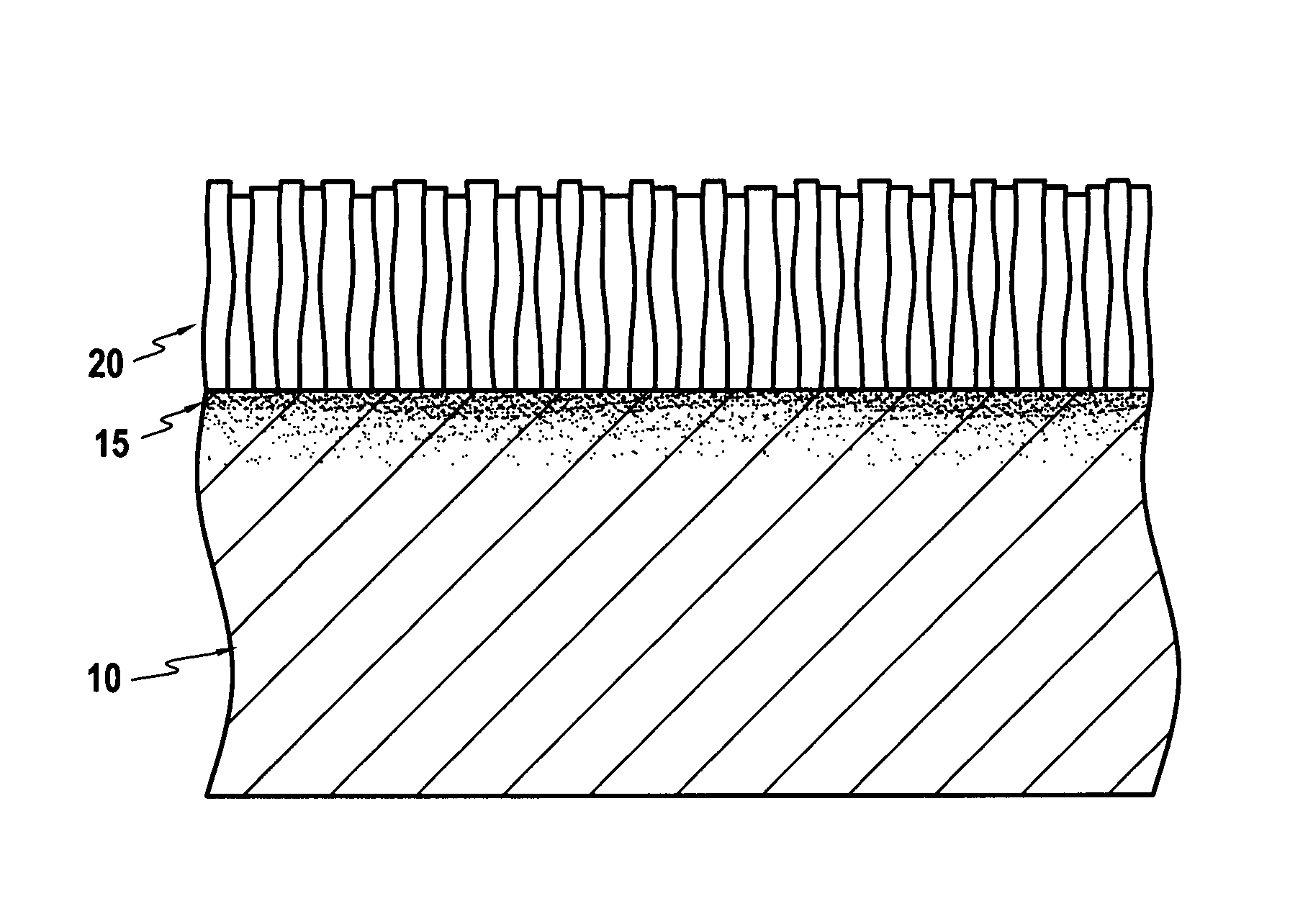Thermal barrier deposited directly on monocrystalline superalloys
- Summary
- Abstract
- Description
- Claims
- Application Information
AI Technical Summary
Benefits of technology
Problems solved by technology
Method used
Image
Examples
Embodiment Construction
[0019]Preferably, the zirconia can be stabilized with at least one oxide of an element selected from the group constituted by dysprosium, erbium, europium, gadolinium, samarium, ytterbium, yttrium, or with a combination of a tantalum oxide and at least one oxide of an element in this group, or with a combination of a niobium oxide and at least one oxide of an element in this group.
[0020]More preferably, the zirconia is stabilized with an yttrium oxide.
[0021]The ceramic is deposited by the electron beam physical vapor deposition (EBPVD) method. The ceramic is supplied in the form of a powder that, once vaporized by the electron beam, condenses on the MCNG superalloy to form a ceramic layer 20. Because an electron beam is used, it is necessary to maintain a primary vacuum in the enclosure containing the electron beam, the ceramic for deposition, and the MCNG superalloy substrate. The ceramic layer 20 deposited by the EBPVD method presents a structure in the form of adjacent columns 22...
PUM
| Property | Measurement | Unit |
|---|---|---|
| Fraction | aaaaa | aaaaa |
| Fraction | aaaaa | aaaaa |
| Fraction | aaaaa | aaaaa |
Abstract
Description
Claims
Application Information
 Login to View More
Login to View More - R&D
- Intellectual Property
- Life Sciences
- Materials
- Tech Scout
- Unparalleled Data Quality
- Higher Quality Content
- 60% Fewer Hallucinations
Browse by: Latest US Patents, China's latest patents, Technical Efficacy Thesaurus, Application Domain, Technology Topic, Popular Technical Reports.
© 2025 PatSnap. All rights reserved.Legal|Privacy policy|Modern Slavery Act Transparency Statement|Sitemap|About US| Contact US: help@patsnap.com

